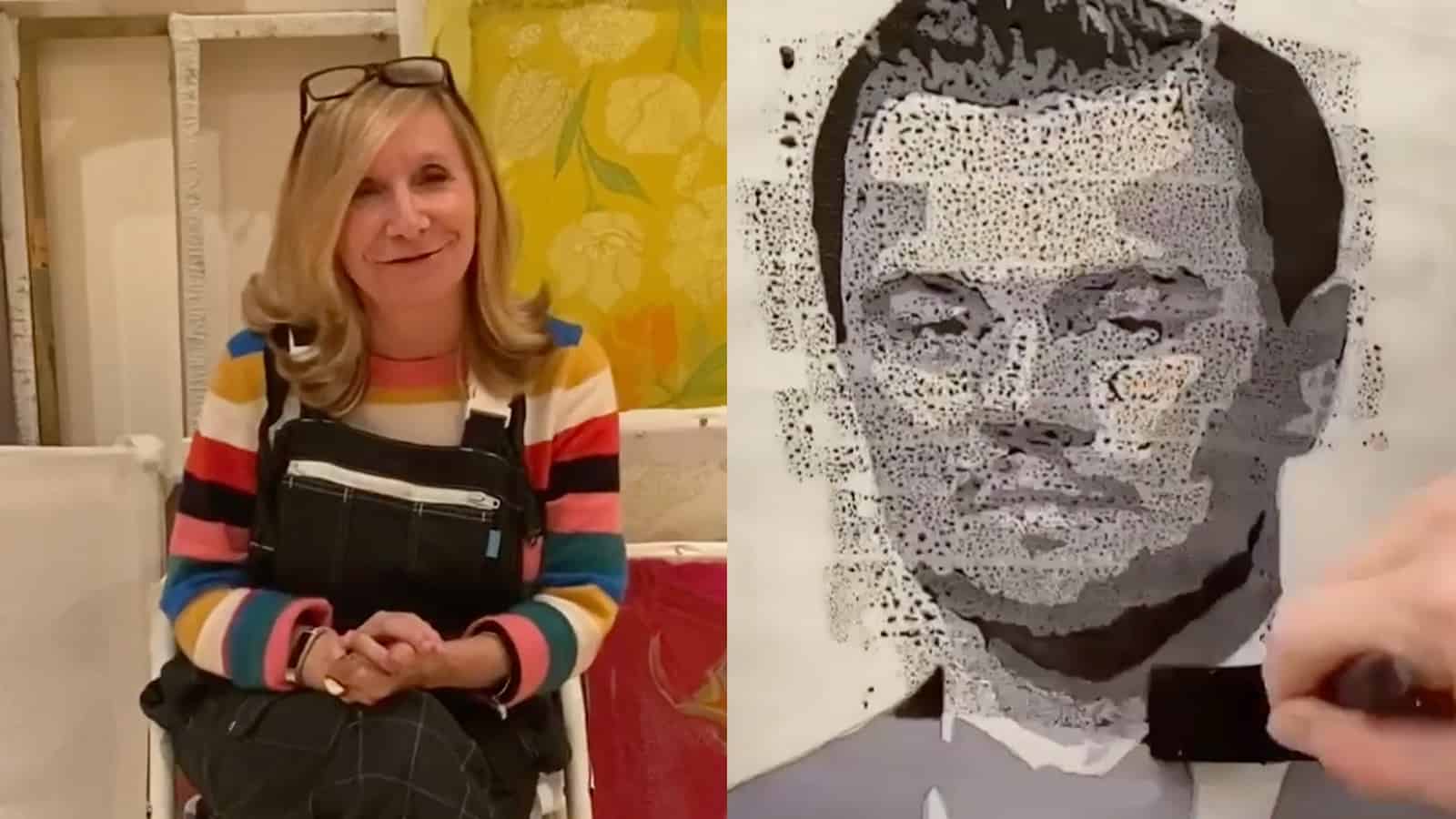Annie Phillips, a Batik artist from London, creates stunning art enjoyed by people around the world. Batik is her greatest passion in life, and she’s thankful to make a living doing what she loves most.
What is Batik?
Batik art involves creating colorful designs and patterns on various fabrics using wax-resistant dye. This traditional dyeing method is common in Indonesia, Sri Lanka, India, Singapore, the Philippines, Nigeria, and Malaysia. Perhaps the most widely known version of batik comes from Indonesia, on the island of Java. The word batik comes from the Javanese word ‘amba,’ meaning write, and ‘tik,’ which means dot.
How does a Batik artist create this unique art?
Batik art involves different dyes and fabrics like cotton, wool, silk, and other natural fabrics. The artist will first wash the cloth to eliminate starch and beat the fabric with a wooden hammer to produce batik art. Next, the Batik artist will use pencils to mark off areas of fabric where the dye will go. Then, they cover the fabric with hot wax, usually made of bee wax or paraffin.
To pour the wax, artists use a tool that resembles a pen called a canting. They use a brush or a tool called a cap to cover larger areas. Then, the Batik artist pours various colored dyes over the wax. This dying and waxing process gets repeated to create more complex, beautiful designs.
The Batik artist employs discharge dyeing, stencils, and etching to make these intricate designs. After the final coat of dye is applied, the Batik artist removes the wax. Sometimes, this process can take up to a year before the cloth becomes ready to use.
The global appeal and history of Batik art
The original batik of Indonesia had declined in popularity until it was rediscovered in the 21st century. Batik artists worldwide create items like traditional clothing, framed art prints, household decor, and more. Besides Indonesia, it’s become popular in the US, Europe, and other countries colonized by the Dutch.
By far, the US consumes more Indonesian Batik art than anywhere else. About 37% of traditional batik textiles get exported to the US. Batik exports from Indonesia have increased from $22 million in 2010 to around $340 million in 2014. Clearly, the market is hot for Batik artists, especially those from Indonesia! Other countries like India, China, Sri Lanka, Singapore, and Malaysia also produce and export batik clothing worldwide.
Batik prints have evolved from being worn as solely traditional clothing to become fashion statements around the world. Batik combines simple designs with colorful patterns to create an art form that’s versant and unique. The beauty of Batik art can brighten up homes and offices, adding color and life to any room. Whether it’s framed on a wall, stitched as curtains or pillow covers, or adorning your coffee mug, Batik art adds simple beauty to the world.
The UNESCO acknowledged Indonesian batik as an Intangible Cultural Heritage of Humanity in October 2009. This designation makes it “internationally recognized as a historical fabric of human civilization.”
Annie’s journey as a modern Batik artist
“I was in my early 20s, I was very lost, I was very low, I was very fed up, and I just thought I’ll create something like a visual diary of my existence,” Annie said. “So, on Monday I created flowers, on Tuesday, I created an abstract, by the end of the week, I’d created 7 pieces of artwork, and that made me feel good.”
“And, I think the reason I am an artist is because creating still makes me feel good. I’m an abstract Batik artist, and being an abstract artist is what excites me most. When you’re an abstract artist, you don’t know where you’re going; you’re not trying to replicate something in your head. You’re trying to explore something in your being, and it’s a magical mystery with destination unknown, and that’s what excites me.”
Most artists would agree that the fun of creating art lies in the process itself. It’s not about rushing to the finish line or trying to prove anything to yourself or others. Art serves as an expression of emotions, of inspiration; it’s a way of conveying what words often cannot. Annie always sets the bar higher but doesn’t put too much pressure on herself.
“I’m motivated to carry on creating after all these years because I can still see myself improve. I want to get better, and I can see that I am getting better now. I can see I’ve still got a long way to go. But I so enjoy seeing myself jump over hurdles and meet certain challenges, and get better at a craft I absolutely love,” she says.
“My work doesn’t aim to say something in the literal sense, but what it aims to do is inspire people to create and to make people feel joyous. And I want, when people look at my work, to feel good like I feel when I create it.”
Here’s her advice for anyone wanting to become a Batik artist (or any artist):
“Don’t wait for inspiration, don’t worry, don’t try. Just start, play, with no destination. Just see where you end up, but start. Inspiration will follow, flow will follow, joy will follow, fun will follow – lots of wonderful marvels, amazing things, but you have to start.”
Final thoughts on the Batik artist who creates beautiful, unique works of art
A Batik artist living in London, Annie Phillips makes the world a little brighter with her stunning art. She’s always been an artist, but art gave her life a new trajectory in her early twenties. She began drawing each day to see where it took her. Years later, she’s still creating art because it brings so much meaning to her life.
She even sells her artwork on the home decor site Society 6. Make sure to check out her work if you’d like to spruce up your home or office area!


















